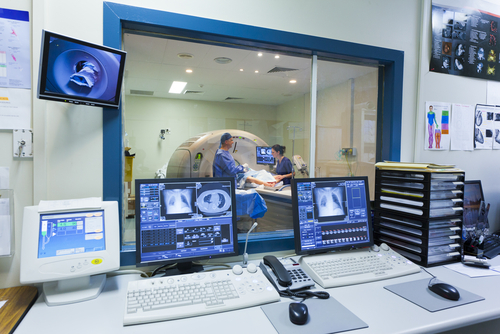New nuclear medicine method shows promise for better detection of neuroendocrine tumors
The Society of Nuclear Medicine and Molecular Imaging (SNMMI) News Jun 08, 2018
Researchers have tested a new nuclear medicine procedure that could safely and more effectively detect cancerous gastrointestinal and pancreatic neuroendocrine tumors (NETs) than current methods, according to a recent study featured in The Journal of Nuclear Medicine.

NETs can occur in almost any organ, but they are most commonly observed in the pancreas and gastrointestinal tract. The average time until diagnosis is 3 to 10 years. An estimated 40 to 95% of cancerous gastroenteropancreatic NETs (GEP-NETs) have spread to other parts of the body (metastasized) by the time of diagnosis.
Most GEP-NETs express a high density of somatostatin receptor subtype 2 (sst2). These receptors have, therefore, become a prime target for imaging and treating these tumors. Currently, gallium-68 (68Ga)-DOTATOC/-TATE for diagnostic imaging and lutetium-177 (177Lu)-DOTATOC/-TATE for therapy are paired for “theranostic” identification and treatment of NETs.
Pre-clinical and preliminary clinical evidence indicates that the novel radiolabeled tracer 68Ga-OPS202, an sst antagonist with a high affinity for sst2, has the potential to perform better than an sst agonist, such as 68Ga-DOTATOC, because 68Ga-OPS202 binds to more sst receptor-binding sites than sst agonists.
This first-in-human phase 1/2 study included 12 patients with well-differentiated GEP-NETs. Based on total numbers of detected malignant lesions, the optimal time window for the scan was determined to be between 1 and 2 hours. The study shows that 68Ga-OPS202 is rapidly cleared from the blood, resulting in low background activity, especially in the liver and gastrointestinal tract.
“Even though the effective dose of 68Ga-OPS202 is comparable to other 68Ga-labeled somatostatin analogs, there are striking differences concerning its biodistribution and organ doses, such as liver, gastrointestinal tract, pancreas, lung, and spleen,” explains Damian Wild, MD, PhD, University Hospital Basel in Basel, Switzerland.
He points out, “The lower organ doses and tracer uptake of 68Ga-OPS202, especially in the gastrointestinal tract and the liver, is clinically relevant, as it allows improvement of the imaging contrast (tumor-to-background ratios) and sensitivity for detecting primary tumor or liver metastases of GEP-NETs (as shown in comparison to 68Ga-DOTATOC in phase 2 of the study, also published in the June JNM). Important for patients is that 68Ga-OPS202 was well tolerated and did not raise any safety concerns.”
Wild states, “68Ga-OPS202 could be a favorable alternative to the current radiolabeled somatostatin agonists in use in the clinic for PET/CT imaging of neuroendocrine tumor patients. In addition, due to their enhanced binding properties, radiolabeled sst antagonists may open a new avenue for PET imaging and targeted radionuclide therapy in non-neuroendocrine tumor indications. In that sense 68Ga-OPS202 is the ideal theranostic companion for 177Lu-OPS201 targeted radionuclide therapy.”
-
Exclusive Write-ups & Webinars by KOLs
-
Daily Quiz by specialty
-
Paid Market Research Surveys
-
Case discussions, News & Journals' summaries